The green tree python (Morelia viridis) and the Emerald tree boa (Corallus caninus) are both green arboreal snakes.
This means that they are frequently confused with one another. While they both have a similar color and fill a similar ecological niche, these animals have many differences.
This list will help you learn the differences between these beautiful snakes.
1. Size
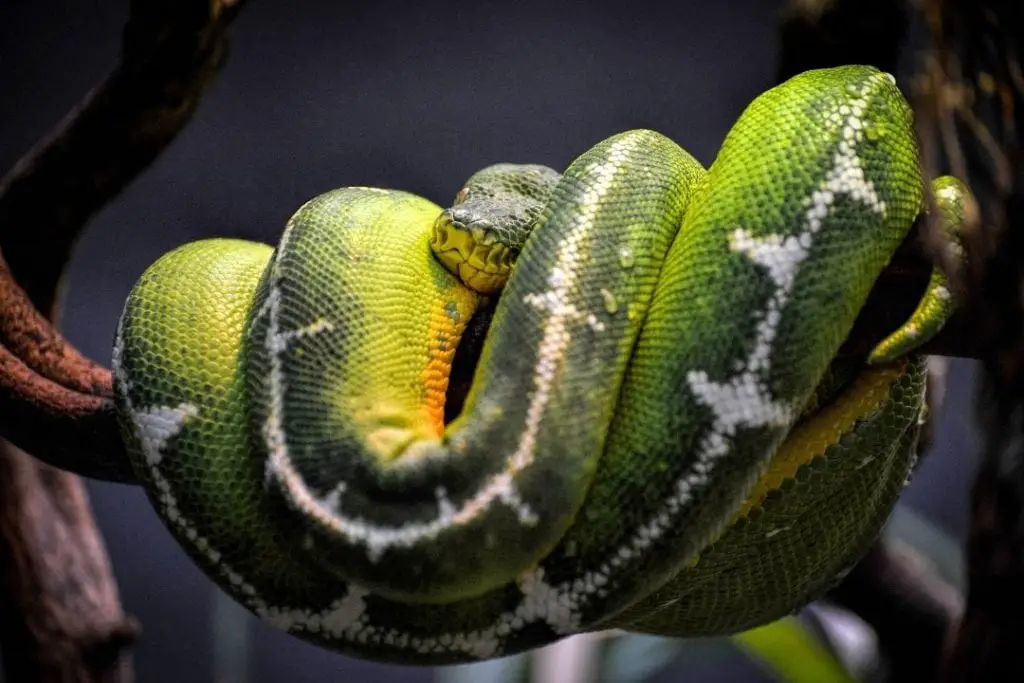
Size is a big difference between these two snakes.
Your average green tree python is smaller and rarely gets over 5 feet long. An emerald tree boa will be between 4 and 9 feet as an adult and will weigh between 2 and 4 pounds.
Male emerald tree boas are typically shorter in length and appear slimmer than females. Green tree pythons do not have any noticeable differences in size between the sexes.
2. Head
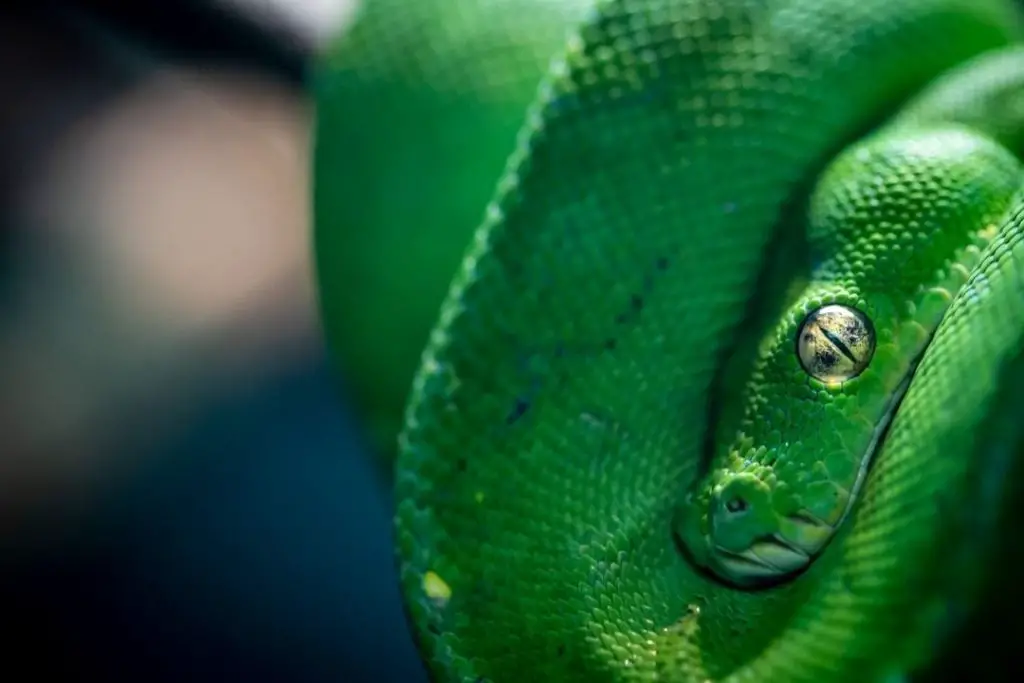
Green tree pythons have a much rounder nose and head.
Emerald tree boas have a square nose with sharper angles to the head. Green tree pythons also have only one row of heat-sensing pits on the face.
Emerald tree pythons have a row of these pits above the mouth in addition to the lower row. Emerald tree boas also have very long teeth. They have the longest teeth of any non-venomous snake!
3. Scales

If you look at a green tree python, they have much smaller and finer scales. Their scales are irregular on the head and body scales that give their scales an uneven appearance.
Emerald tree boas have larger scales on the head. Scales on the rest of the body are larger in comparison and more even. Comparing head scalation is one of the easiest ways to tell these two snakes apart.
4. Colors
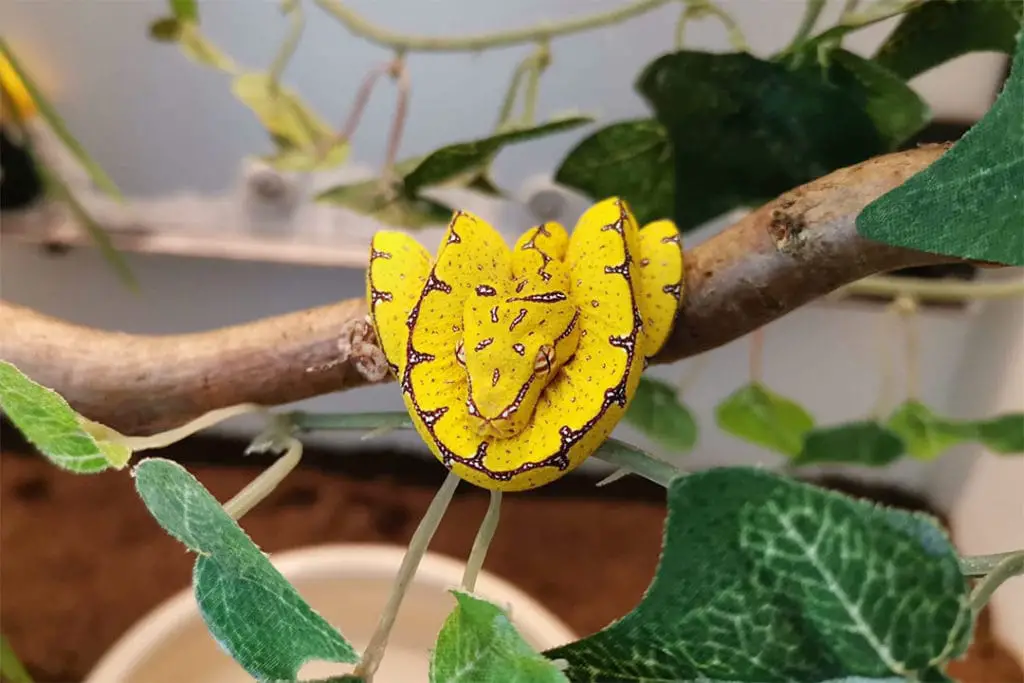
Even morphs of the emerald tree boa tend to be some shade of green, but some animals are very close to black.
They also have patches or stripes of white that go down the back. These white markings cover multiple scales and may be in a patch of multiple scales or extend to the side to form stripes.
These are typically large and cover numerous scales over the body. However, some morphs of emerald tree boa are patternless.
Green tree pythons come in a much greater color variety. Some morphs retain the yellow color into adulthood. They can also be black, blue, and green.
If they do have any white markings, they tend to be smaller and will never be seen in thick patches or stripes. You may see scattered white or black scales depending on the morph of the snake.
5. Range
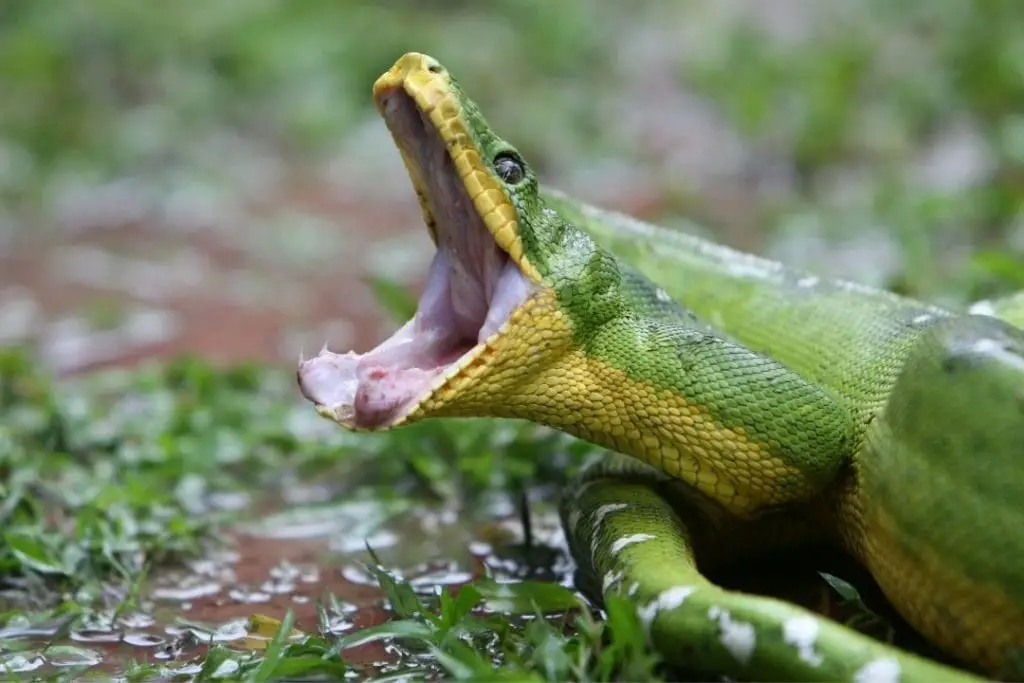
Emerald tree boas are found in the Amazon Basin from Venezuela to northern Bolivia. Green tree pythons are found in New Guinea, Indonesia, and the Cape York Peninsula of Australia. This means they are separated by the Pacific Ocean.
6. Reproduction
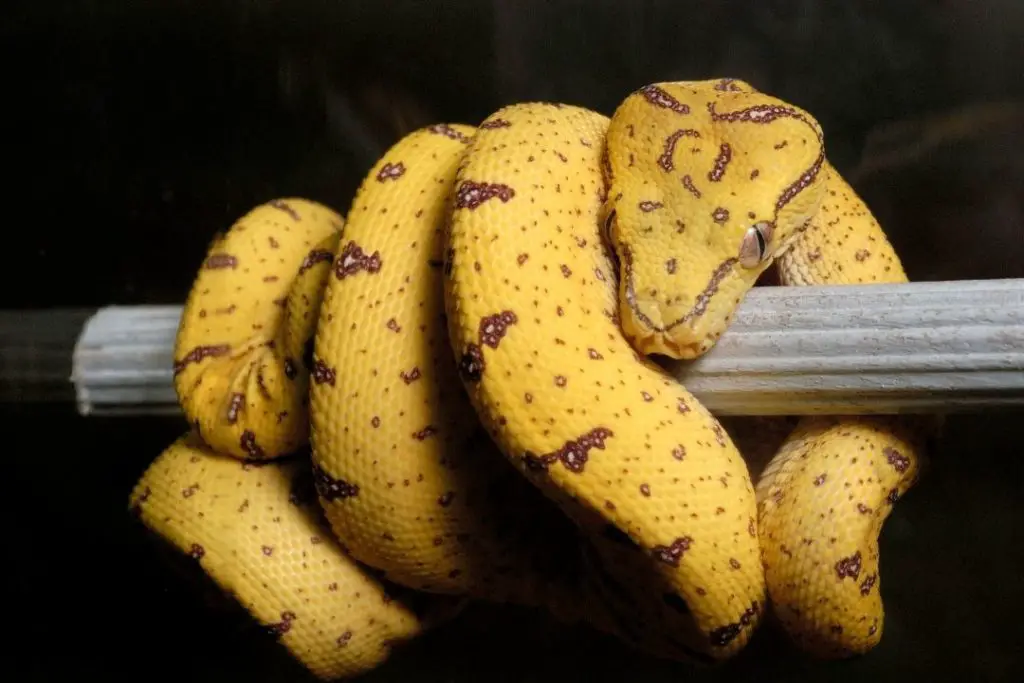
While both snakes are considered to be primitive snakes, they do have some big differences. The green tree python is oviparous, meaning it lays eggs.
The female will find a secure location like a hollow log with high humidity and lay between 5 and 35 eggs. The female will then incubate the eggs by wrapping around them and shivering to raise the temperature of her eggs.
She will then stay with the eggs for 45-56 days until they hatch, at which point she leaves.
Emerald tree boas are viviparous, meaning that they give birth to live young. The gestation period is 6-7 months and there are typically 6 to 32 babies in a litter. The average litter size is 12. Once the babies are born, they are independent and receive no care from the mother.
6. Behavior
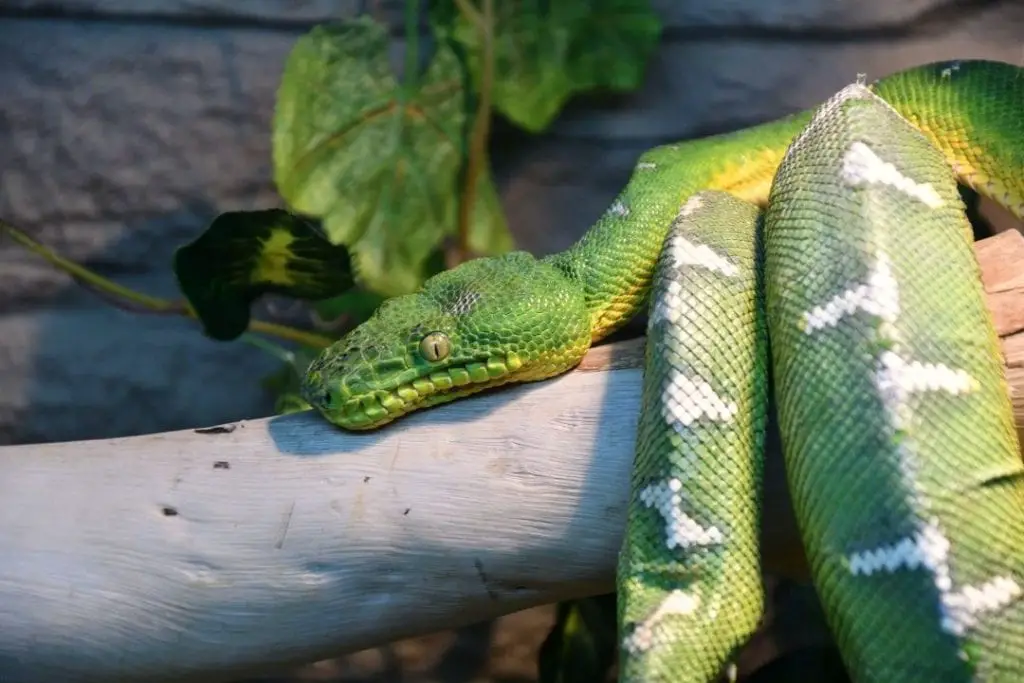
While both snakes have a similar resting position, they do have some differences in behavior.
For instance, green tree pythons are known for their luring behavior. They will wiggle their thin tail over their head to help draw in potential prey.
This tail is also a different color than the rest of the snake, so it helps draw attention compared to the green of the snake and the surrounding leaves.
Young green tree pythons are diurnal while adults are nocturnal.
They will spend all day in the resting position and change to a hunting posture at dusk.
They secure themselves to a branch with the posterior half of their body and curl into an accordion shape to be ready to strike at prey on lower branches or the ground.
They are ambush predators and can spend up to 2 weeks at a single location. Females are more active and may change hunting locations every day.
Emerald tree boas are also ambush predators, but they will typically hang down from a branch at night and will snatch up passing rodents or lizards. They do not travel very far compared to green tree pythons.
Conclusion
Green tree pythons and emerald tree boas are great examples of convergent evolution. They both fill the same ecological role as ambush hunters that live in the trees.
They both have color changes between juveniles and adults that help hide them in their preferred environment, though this lasts longer in green tree pythons.
They even prey on similar types of prey.
They also share similar behavior in captivity with a distaste for handling in general.
However, since they are not from the same genus and occupy different habitats, they do have considerable differences.
If you have any further questions or comments, please leave them below.
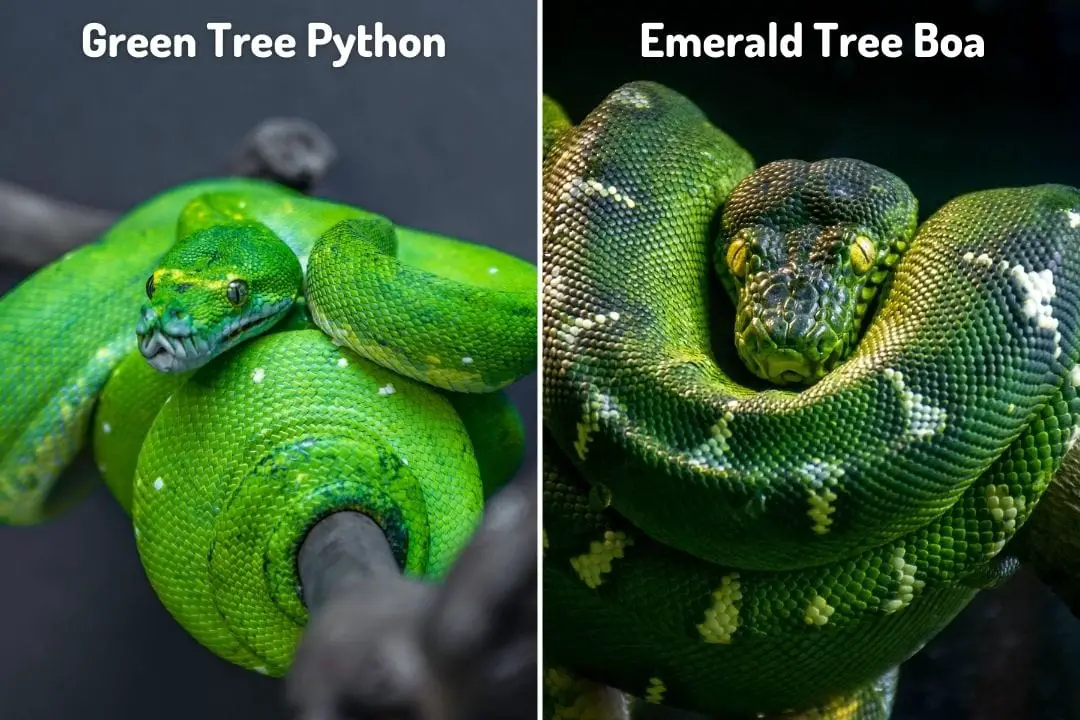
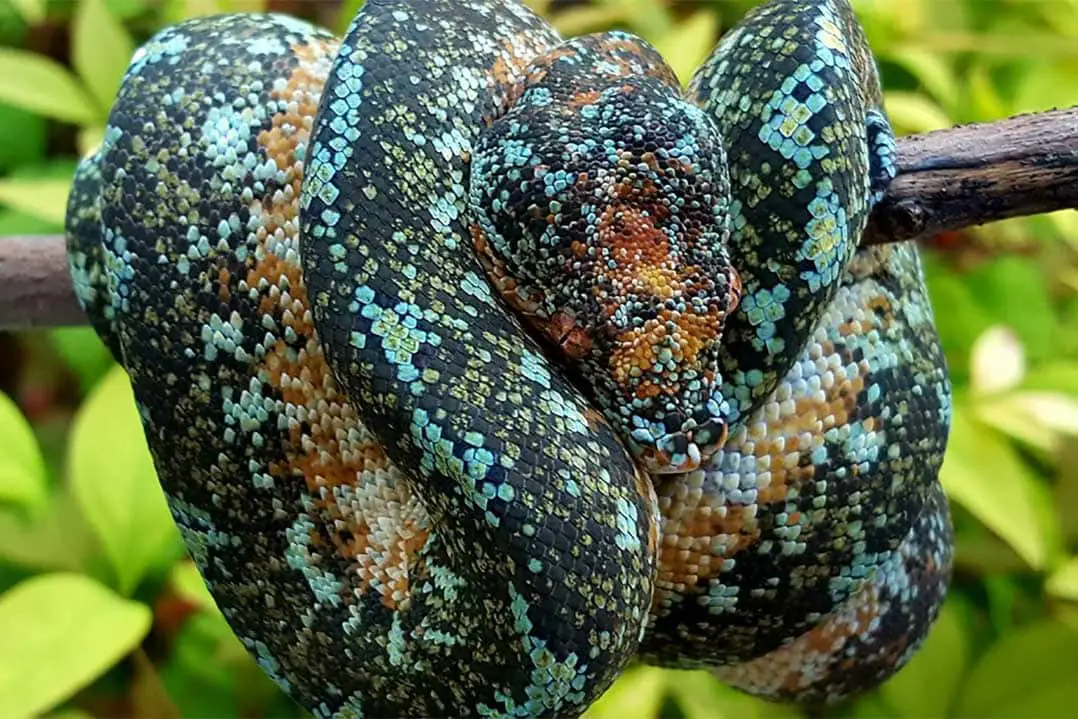
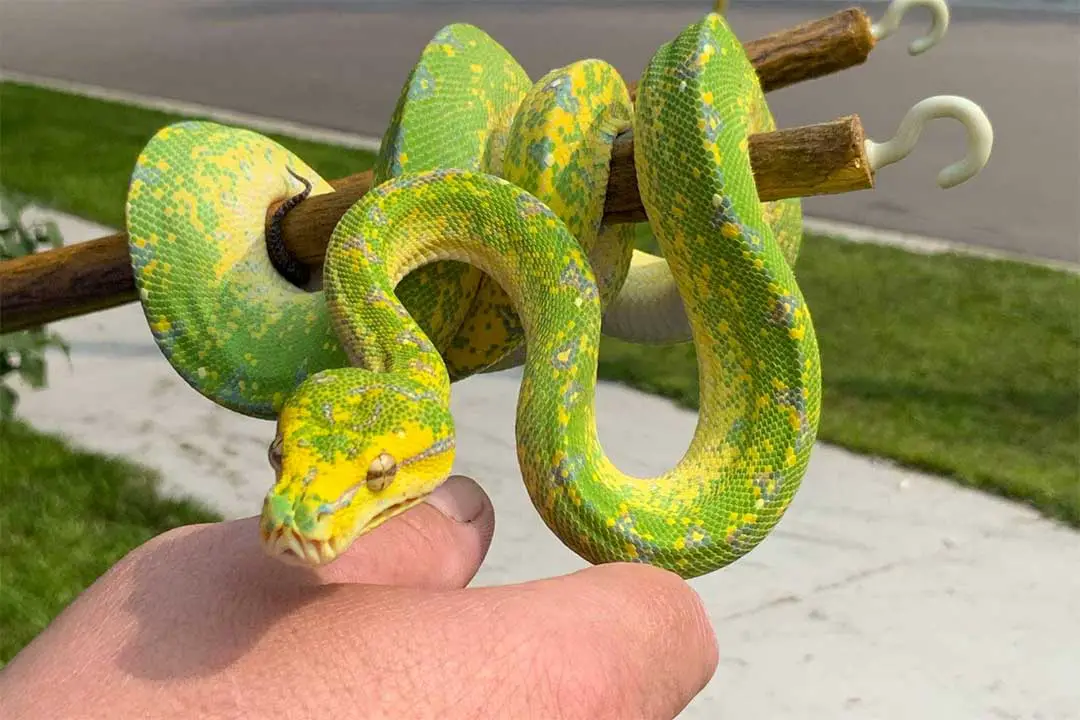
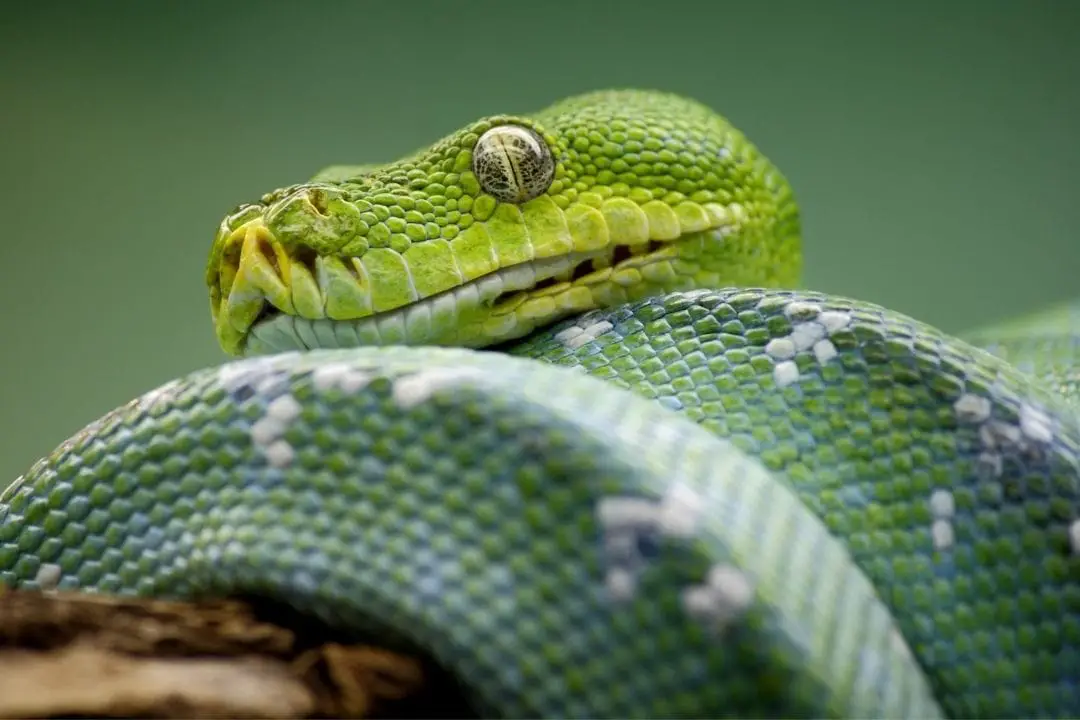

Enjoyed the read. May want to correct the last picture labelled “green tree boa”. May confuse some of the folks trying to learn how distinguish the two.